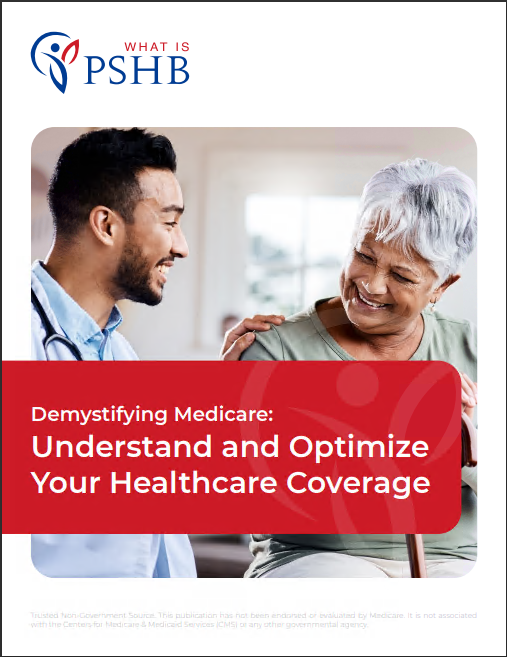Key Takeaways:
-
Medicare Supplement plans, also known as Medigap, help cover out-of-pocket costs Original Medicare leaves behind, providing financial relief and predictable expenses.
-
As a USPS retiree or worker, understanding how Medigap works alongside Medicare can ensure you make informed healthcare decisions for 2025.
Why Consider Medicare Supplement Plans?
Original Medicare is a solid foundation, but it doesn’t cover everything. You’re responsible for deductibles, copayments, and coinsurance, which can add up quickly, especially if you face unexpected medical needs. Medicare Supplement plans are designed to fill these gaps, giving you peace of mind and protecting your finances.
Key Gaps in Original Medicare
-
Part A Deductible and Coinsurance: In 2025, the hospital deductible is $1,676 per benefit period. For extended stays, coinsurance kicks in after 60 days.
-
Part B Deductible and Coinsurance: The annual Part B deductible is $257, and after meeting it, you pay 20% of approved costs.
-
No Out-of-Pocket Maximum: Original Medicare doesn’t have a cap, leaving you exposed to unlimited expenses.
How Medigap Works
Medicare Supplement plans, standardized across most states, are private policies that cover costs like Part A and B deductibles, coinsurance, and excess charges. While these plans don’t include prescription drug coverage, they’re a strong complement to Original Medicare.
Eligibility Requirements
-
You must be enrolled in both Medicare Part A and Part B.
-
The best time to buy a Medigap plan is during your Medigap Open Enrollment Period, which lasts six months starting the month you turn 65 and are enrolled in Part B.
Medigap Benefits in 2025
Medicare Supplement plans offer a range of coverage options. While plan benefits vary, here are some standard features you can expect:
-
Hospital Costs: Coverage for Part A coinsurance and an additional 365 hospital days.
-
Part B Coinsurance or Copayments: Most plans cover these costs, reducing your out-of-pocket spending.
-
Skilled Nursing Facility Care Coinsurance: Medigap can pay for costs Original Medicare doesn’t fully cover.
-
Foreign Travel Emergency Coverage: Some plans offer limited coverage for emergency care outside the U.S.
Medigap vs. Medicare Advantage: What’s the Difference?
While both Medigap and Medicare Advantage (Part C) offer additional coverage, they serve different purposes.
-
Medigap: Works with Original Medicare to reduce out-of-pocket costs. You keep the freedom to choose any doctor or hospital that accepts Medicare.
-
Medicare Advantage: Replaces Original Medicare with an all-in-one plan that often includes drug coverage but limits your provider network.
For USPS retirees who value flexibility and predictability, Medigap is a preferred option.
Costs to Consider
While Medigap helps manage medical expenses, you’ll need to budget for:
-
Monthly Premiums: These vary based on plan type, age, and location.
-
Part B Premiums: In 2025, the standard Part B premium is $185 per month.
-
Out-of-Pocket Expenses: Medigap plans reduce but may not eliminate all costs, especially if you choose a plan with limited coverage.
Choosing the Right Medigap Plan
When evaluating Medigap options, consider the following:
Coverage Needs
-
Do you want comprehensive coverage or prefer lower premiums with more out-of-pocket responsibility?
-
How often do you anticipate needing healthcare services?
Financial Considerations
-
Can you afford higher premiums for broader coverage, or do you prefer a more basic plan?
-
Factor in the long-term predictability of Medigap compared to the potential costs of not having coverage.
Enrollment Periods
Outside the Medigap Open Enrollment Period, you may face medical underwriting, which could result in higher premiums or denial of coverage.
Medigap for USPS Workers and Retirees
If you’re a USPS worker or retiree, Medigap plans can complement your existing benefits. Many retirees coordinate Medigap with other programs like the Federal Employees Health Benefits (FEHB) or the Postal Service Health Benefits (PSHB) program.
Coordinating Medigap with Other Benefits
-
FEHB/PSHB and Medigap: While FEHB and PSHB provide robust coverage, enrolling in Medigap can fill any gaps not covered by these plans.
-
Medicare Coordination: If you’re enrolled in both Medicare and FEHB/PSHB, Medigap ensures smoother coordination of benefits, reducing potential out-of-pocket surprises.
Standardized Medigap Plans
In 2025, most states offer 10 standardized Medigap plans (A, B, C, D, F, G, K, L, M, N). Each plan provides a different level of coverage. Here’s a quick overview:
-
Plan F and G: Offer the most comprehensive coverage, though Plan F is only available to those eligible for Medicare before 2020.
-
Plan N: Popular for its balance between coverage and lower premiums.
-
High-Deductible Plans: Available for Plan F and G, these options have lower premiums but require you to meet a higher deductible before coverage begins.
Benefits of Medigap for USPS Retirees
Medigap plans offer peace of mind by providing predictable healthcare costs, especially for those managing chronic conditions or frequent medical visits. For USPS retirees, this can mean:
-
Simplified healthcare management.
-
Reduced financial stress.
-
Confidence in accessing any Medicare-participating provider without network restrictions.
Steps to Get Started with Medigap
-
Evaluate Your Healthcare Needs: Consider your medical history, frequency of doctor visits, and prescription needs.
-
Compare Plans: Review the benefits of each standardized plan to see which aligns with your priorities.
-
Check Enrollment Periods: Ensure you enroll during your Medigap Open Enrollment Period for guaranteed coverage.
-
Coordinate with Other Benefits: Understand how Medigap fits with your FEHB or PSHB benefits.
Making Healthcare Affordable and Reliable
By filling gaps in Original Medicare, Medigap provides USPS retirees with financial predictability and access to high-quality care. With options tailored to various needs, you can focus on maintaining your health without worrying about unexpected expenses.
Looking Ahead to 2025 and Beyond
Planning for healthcare is an essential part of retirement. With Medigap, you’re not just filling the gaps—you’re investing in peace of mind and long-term financial security.











